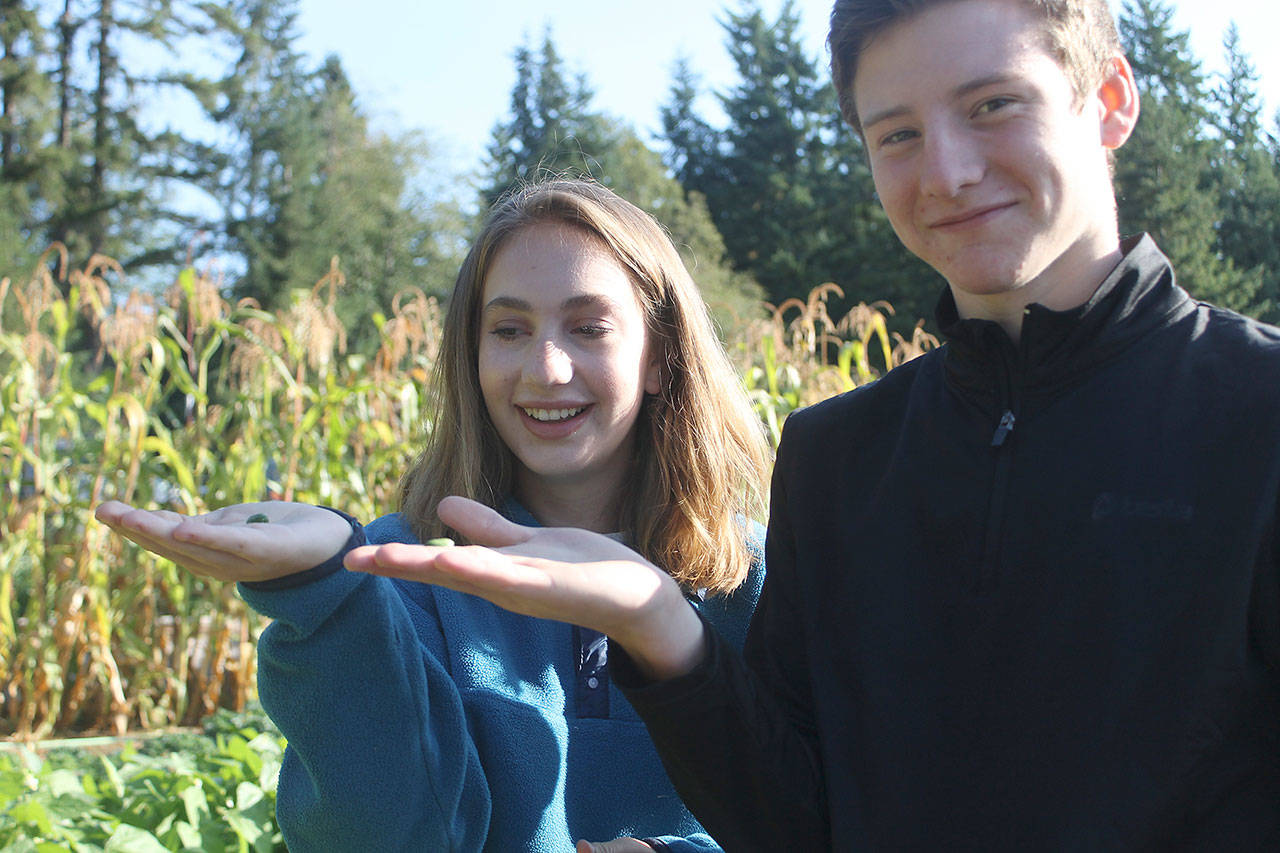South Whidbey High School junior Matthew Simmons isn’t a fan of tomatoes.
It’s just about the only thing he doesn’t enjoy eating at the school’s newest garden, which is located just a stone’s throw away from the main entrance of the school. He’s acquired a taste for many of the other vegetables grown there, which includes everything from carrots to cucumbers, through the school’s intro to agriculture class taught by new teacher Seth Raabe. He’s one of about two dozen students who start their day by heading out to the garden to learn about sustainability, cultivation and how humankind domesticated plants to its benefit.
“I tried kale for the first time, which is really good,” Simmons said.
The garden is a primary tool for the class that is one of two required electives that students can choose in order to graduate. While the class has been around for about four years, the garden was tilled just this past school year on March 8 by South Whidbey School District Garden coordinators; students previously used the district’s four other gardens to do their work.
Cary Peterson, the garden program’s lead coordinator, said the garden is acting as a “living” classroom for students to examine the plants they’re learning about up close.
“You can see the plant and really get to know it,” Peterson said. “He’s (Raabe) talking about how genetics works, how plants breed and how plants from a wild plant become a domesticated plant, and then they become many different varieties.”
“There’s so many different ways you can use a garden to learn,” she added.
The garden, which includes fences and gates that surround the perimeter, was developed on what was formally a patch of “dead” grass near the bus pick-up area that looked “terrible,” according to Principal John Patton. It’s a far different sight now and contains rows of fully grown vegetables. There are over dozen different vegetable and plant species.
“That’s probably the coolest classroom in the state right there,” Patton said. “It’s been a vision for a while.”
“Putting it out front lets the community know that we’re really proud of it,” added Superintendent Jo Moccia.
Patton and Moccia commended Peterson’s efforts for seeing it come to fruition, while Peterson credited Patton and Moccia for having the idea to develop it.
Peterson also said Raelani Kessler, a garden program coordinator, was instrumental in its development.
Raabe, a 2000 graduate of South Whidbey High School, said the general scope of the class is to show students how humans went from hunter-gatherer societies to cultivating and domesticating plants. Long ago, humans figured out ways to “coax” the plants to behave differently and provide more nutrition, he said.
Day-to-day activities include growing food, “having fun” and looking at agriculture from the “bigger picture.”
“I want them to see that we’re all dependent on the earth for our sustenance,” Raabe said.
Simmons has found the class to be far more interesting than he expected.
“It can really help and it’s fun,” Simmons said. “…We can use cultivation in the garden and also in our own lives. That’s what Mr. Raabe does a lot; it’s not just about the garden.”
Ari Rohan, a senior, shared Simmons’ feelings about the class, as he too was “surprised” about how much he’s enjoyed learning about agriculture. He also said that starting off the school day by going outside to the garden is preferable to a classroom.
“It’s cool to get out and actually learn something, and it’s hands-on,” Rohan said.
Another senior in the class, Alexa Varga, echoed Rohan’s sentiments, and also added that her goals for the class are to learn how plants grow and how humankind has domesticated them to its benefit.
“I enjoy not sitting in class for an hour and a half,” Varga said. “…It’s cool to eat what you’ve grown.”



